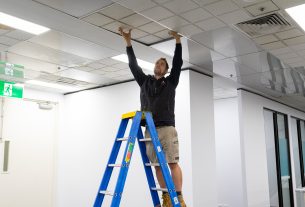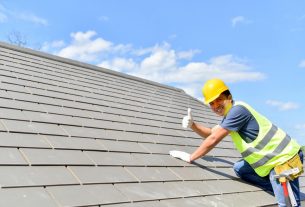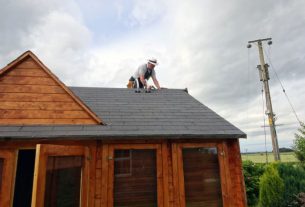How to Safeguard Your Roof from Leaks During the Next Storm?
When a storm hits, the last thing you want is a leaking roof causing damage to your home. Taking proactive steps to safeguard your roof is essential to prevent leaks during severe weather. In this blog post, we will provide you with practical tips on how to ensure your roof remains watertight and secure during the next storm.
Inspect and Maintain Your Roof Regularly
Regular roof inspections are key to identifying potential issues before a storm strikes. Check for missing or damaged shingles, cracked flashing, or deteriorating seals around vents and chimneys. Replace any damaged materials promptly to maintain the integrity of your roof.
Additionally, keep your roof clean by removing debris such as leaves and branches that can trap moisture and cause damage. Trim overhanging tree branches to prevent them from rubbing against the roof during strong winds.
Reinforce Vulnerable Areas
Certain areas of your roof are more susceptible to leaks, such as valleys, seams, and flashing around skylights and vents. Apply a high-quality roof sealant or waterproofing membrane to reinforce these vulnerable areas. This extra layer of protection can prevent water from seeping in and causing leaks. Do not hesitate to call a professional for a perfect result.
Ensure Proper Attic Ventilation
A well-ventilated attic plays a vital role in preventing roof leaks. Improper ventilation can lead to moisture buildup, which can damage the roof structure and create conditions favourable for mould growth. Make sure your attic has proper insulation and vents to allow for adequate airflow, reducing the risk of condensation and water damage.
Proper attic ventilation also helps regulate the temperature, preventing ice dams from forming during winter storms. Ice dams occur when warm air from the attic melts snow on the roof, which then refreezes near the roof’s edge, causing water to back up under the shingles and potentially leading to leaks. Ensuring proper ventilation helps minimize the risk of ice dam formation and subsequent water damage.
Clean and Maintain Gutters and Downspouts
Clogged gutters and downspouts can cause water to back up and overflow onto your roof, leading to leaks. Regularly clean and maintain your gutters by removing leaves, debris, and any blockages. Ensure that downspouts are securely connected and directing water away from your home’s foundation.
Consider installing gutter guards to prevent debris accumulation and make maintenance easier. Properly functioning gutters and downspouts will effectively channel water away from your roof, reducing the risk of leaks.
Schedule Professional Roof Inspections and Maintenance

While regular inspections and maintenance are essential, it’s also beneficial to have your roof professionally inspected and maintained. A qualified roofing professional can identify potential issues that may go unnoticed and provide necessary repairs or preventive measures. Professional maintenance can prolong the lifespan of your roof and minimize the risk of leaks during storms.
During a professional inspection, the roofing expert can assess the overall condition of your roof, including its flashing, seals, and underlying structure. They can also address any specific concerns you may have and offer valuable advice on maintaining your roof’s integrity.
All in all
Taking proactive measures to safeguard your roof from leaks during storms is crucial for protecting your home. By conducting regular inspections, reinforcing vulnerable areas, ensuring proper attic ventilation, maintaining gutters and downspouts, and scheduling professional roof inspections, you can minimize the risk of water damage and keep your roof watertight when the next storm arrives.
Remember to bookmark our blog for more informative articles on roof maintenance, and don’t forget to share your own experiences and additional tips in the comments section below. We would love to hear from you!



